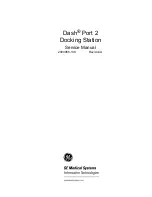
70
7. Close the battery door.
Repeat for the additional remote transmitters, verifying each remote is on a different channel.
3.5.2 Sensor Placement
The best mounting location for the indoor sensor is in a location that never receives direct
sunlight, not even through windows. Also, do not install in a location where a nearby radiant
heat source (radiator, heaters, etc.) will affect it. Direct sunlight and radiant heat sources will
result in inaccurate temperature readings.
The sensor is meant to provide indoor conditions for display on the console, but if you would
rather have a second source for outdoor conditions instead, you can mount this unit outside.
Recommend to mount the unit under cover (eve or awning or similar).
To mount or hang the unit on a wall or wood beam:
Use a screw or nail to affix the remote sensor to the wall, as shown on the left side of
Figure 15, or
Hang the remote sensor using a string, as shown in right side of Figure 15
Figure 15: Indoor sensor mounting
Note:
Make sure the sensor is mounted vertically and not lying down on a flat surface. This
will insure optimum reception.
3.6 Best Practices for Wireless Communication
Wireless (RF) communication is susceptible to interference, distance, walls and metal barriers.
We recommend the following best practices for trouble free wireless communication between
both sensor packages and the console:
Indoor sensor placement:
The sensor will have the longest reach for its signal when
mounted or hung vertically. Avoid laying it down on a flat surface.
Electro-Magnetic Interference (EMI)
. Keep the console several feet away from computer
monitors and TVs.
Radio Frequency Interference (RFI).
If you have other devices operating on the same
frequency band as your indoor and/or outdoor sensors and experience intermittent
















































